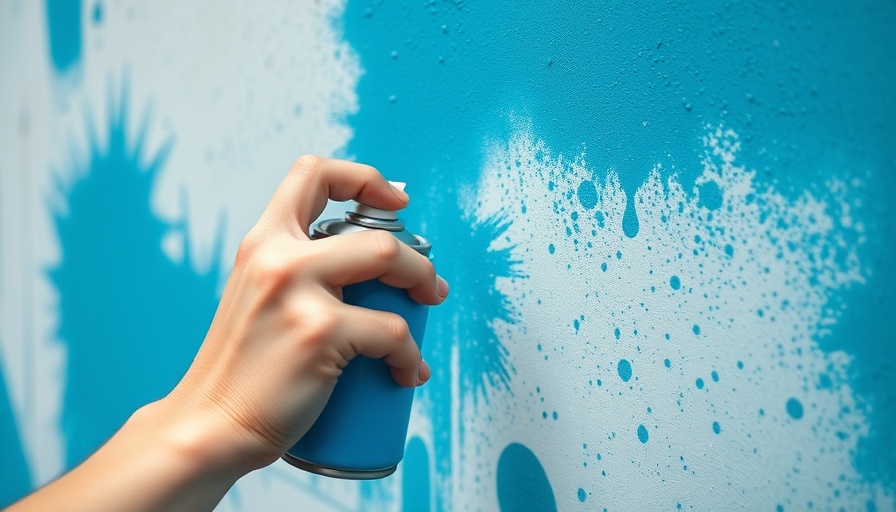
Mastering the Art of Spray Painting: Tips for Homeowners
Spray painting is often seen as a quick and easy way to refresh furniture or home decor. However, it requires more careful preparation and technique than you might think. If you’re a California homeowner considering a spray painting project, understanding the ins and outs can elevate your DIY skills dramatically. Here’s what you need to know to achieve that professional finish.
Choosing the Right Paint
One of the most critical steps in spray painting is selecting the right type of paint. For plastic materials, conventional paints may not adhere properly. Luckily, many brands offer specialized paints that bond effectively with plastics, such as Krylon Fusion for Plastic and Rust-Oleum 2x. Using the correct paint ensures durability and a flawless finish.
The Importance of Technique
Technique plays a vital role in achieving an even coat. One key tip is to spray light coats and allow adequate drying time before applying additional layers. This might feel slow, but jumping right in with thick coats often leads to unsightly drips. By adopting a strategic approach—starting with vertical surfaces before moving to horizontal areas—you can significantly improve the final result.
Common Mistakes to Avoid
Many DIY enthusiasts overlook the potential for runs and stripes. To avoid these issues, aim for a 50% overlap with each pass of the spray can. This approach helps create a uniform finish and avoids heavy spots. Additionally, swinging the can in an arc may feel natural but causes uneven coverage. Instead, keep your motion steady and parallel to the surface. The disciplined technique makes all the difference.
Protecting Yourself: Safety First
Spray painting can release harmful chemicals into the air, making safety gear essential. Wearing an organic vapor respirator while you work helps safeguard your lungs from fumes. If possible, opt for outdoor projects, but make sure to avoid the wind, which could mess up your application. Indoor spray painting is feasible, provided you ventilate properly by opening windows and doors.
Tools and Techniques for Better Control
Using a trigger handle for your spray paint can drastically enhance your control and comfort level, especially for larger projects requiring multiple cans. Finger strain is a common issue among DIYers, but a trigger handle allows for easier, prolonged use. Moreover, investing in quality tools can lead to a higher satisfaction rate with the finished look.
The Benefits of Patience and Preparation
Taking your time with each step of the project is crucial—especially when preparing surfaces. Proper surface preparation, such as cleaning and sanding, can prevent common pitfalls and ensure paint adheres effectively. Adequate preparation not only results in better-looking finishes but also increases the longevity of your paint job.
Bringing It All Together: Final Thoughts
Spray painting is a powerful tool in the DIY arsenal, but mastering it requires a blend of knowledge, practice, and meticulousness. By choosing the right materials and adopting effective techniques, you can achieve stunning results that will enhance your living space. Don't rush the process; careful planning pays off in a beautiful finish that can transform your home.
Now that you’re armed with these insights, why not tackle your next home project with confidence? Practice these techniques on smaller items to build your skills before moving on to larger tasks. With patience and the right approach, you'll master the art of spray painting in no time!
 Add Row
Add Row  Add
Add 




Write A Comment